Last week JB Hunt Transportation Services (JBHT) warned that the freight trucking sector was slowing down. JBHT’s President said: “Simply stated, we’re in a freight recession.” UPS echoed their sentiment on Tuesday. First-quarter revenue for UPS fell short of expectations and 6% below last year’s level. Further, they guided forward revenue projections lower. Carol Tome, CEO, stated, “In the first quarter, deceleration in U.S. retail sales resulted in lower volume than we anticipated, and we faced ongoing demand weakness in Asia. Given current macro conditions, we expect volume to remain under pressure.” Per the WSJ, the most significant volume declines were in domestic next-day air shipments (-10.7%) and deferred services (-24.5%).
Results and statements from UPS and JBHT point to weakening demand for shipping services due to slowing economic activity. Freight activity tends to be a leading, not lagging, economic indicator. Today’s earnings release from Amazon should shed more light on shipping and the state of the consumer. Unfortunately, we must wait a few weeks for retail leaders Walmart and Target to report on earnings. Consumers have been racking up considerable credit card debt and drawing down their savings over the last year. UPS and JBHT warnings of a freight recession should be followed closely as we may be in the early innings of a consumer slowdown.
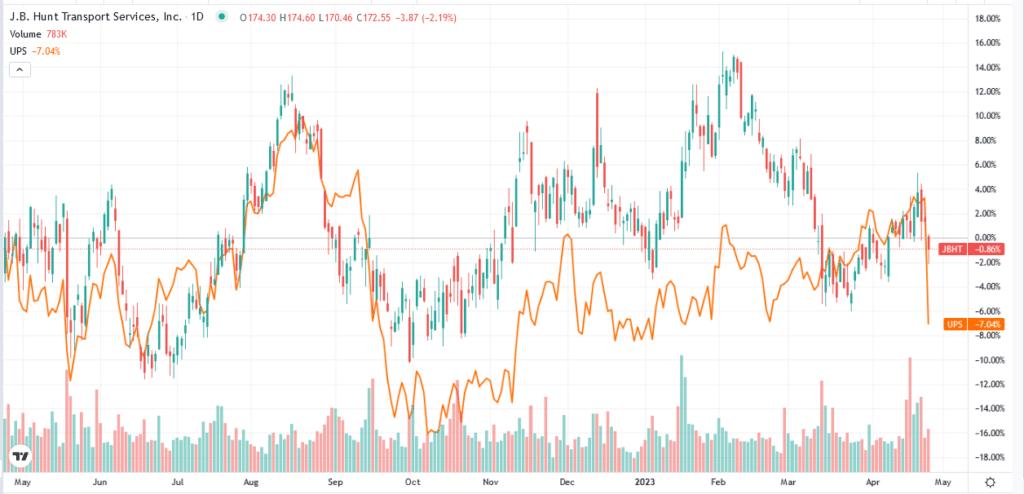
What To Watch Today
Earnings
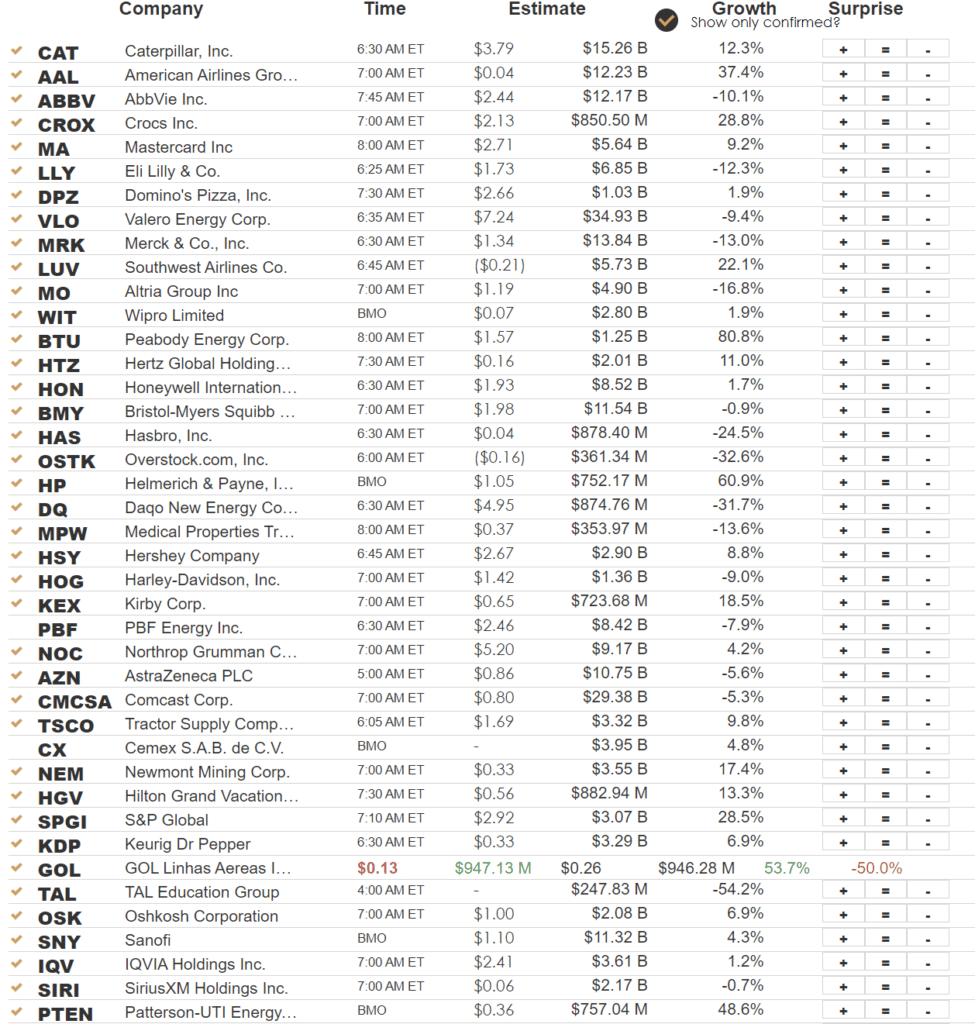
Economy
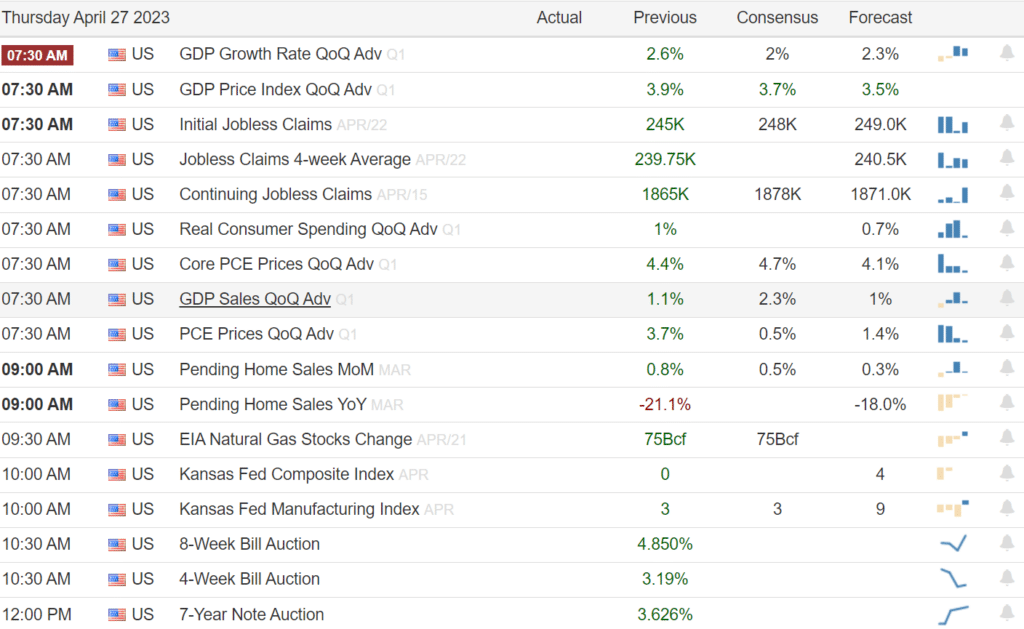
Market Trading Update
Despite MSFT and GOOG earnings which helped support the Nasdaq yesterday, the rest of the S&P 500 index was dragged lower by everyone else. Notably, the market broke below the April downtrend line, taking out initial support. With the 50-DMA just below current levels, the 4040 level will be critical support.
The market will get another chance to rally today following META’s earnings last night, but the sell signal continues to suggest lower prices ahead in the short term. We recommended raising cash levels last week, which remains the advice now on any short-term bounces.
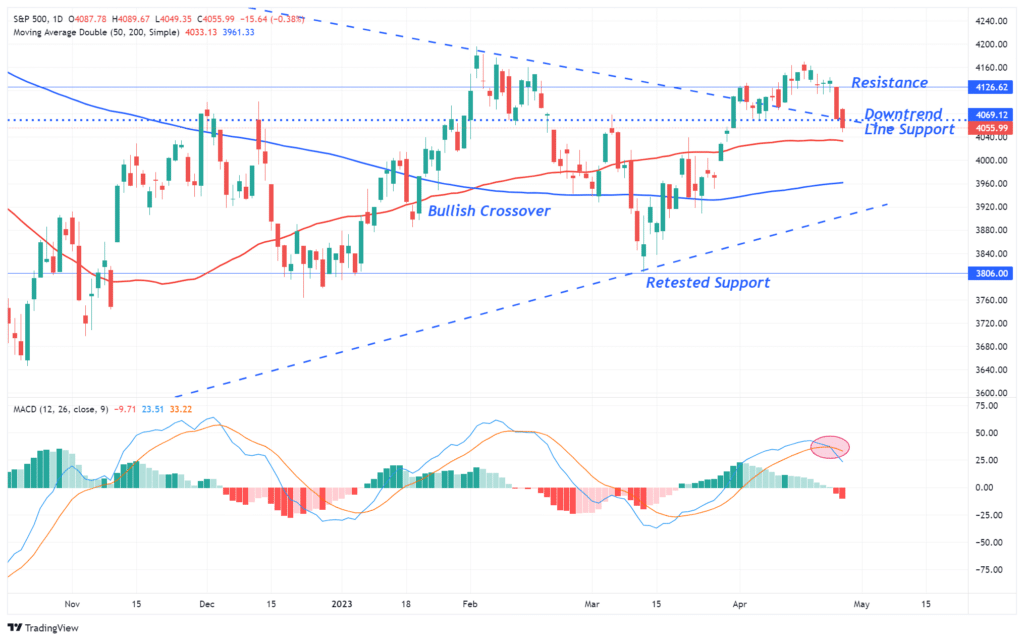

Google and Microsoft
Two tech heavyweights reported better-than-expected earnings, but their stocks had different reactions.
Google beat on revenue and earnings and approved a $70bn stock buyback. While Google Cloud revenue was up 28% annually, their YouTube ad revenue fell by 3%. That was the third consecutive quarter its ad revenue fell. Google Cloud finally turned a profit. Like Amazon and Microsoft, cloud revenue is a big driver of growth. However, investors tend to discount cloud revenue as it is an increasingly competitive field with easy access for new entrants with cheaper fees. Therefore, maintaining profit margins in cloud products will be difficult. Google shot up 6% on the earnings release but gave all of it back by the next day’s opening.
Microsoft easily beat expectations for earnings and revenues and reported relatively strong results across all business lines. Maybe most important for both companies, Google used the word AI 78 times on its earnings call compared to 64 for Microsoft. Microsoft closed 8% higher after its earnings announcement.
Yesterday’s Commentary discussed Mcdonald’s and questioned its value stock classification. In particular, despite flat earnings and revenue for the last eight years, its stock trades at a P/E of 29. To wit-
Since 2014, MCD’s P/E has risen from 17 to 29. Its price to sales (P/S) is 9.3, three times its level in 2014. A price to sales of such a high level is often associated with high-growth potential companies, not low to no-growth firms.
We mention it because Microsoft, a high-growth company, told investors to expect 15-18% EPS growth for the next few years. Despite vastly different growth prospects, Microsoft trades at the same P/E and P/S as McDonald’s. Further, Microsoft has new innovations that should propel growth into the future. McDonald’s??? The point of comparison is to illustrate how passive investment styles warp stock valuations.
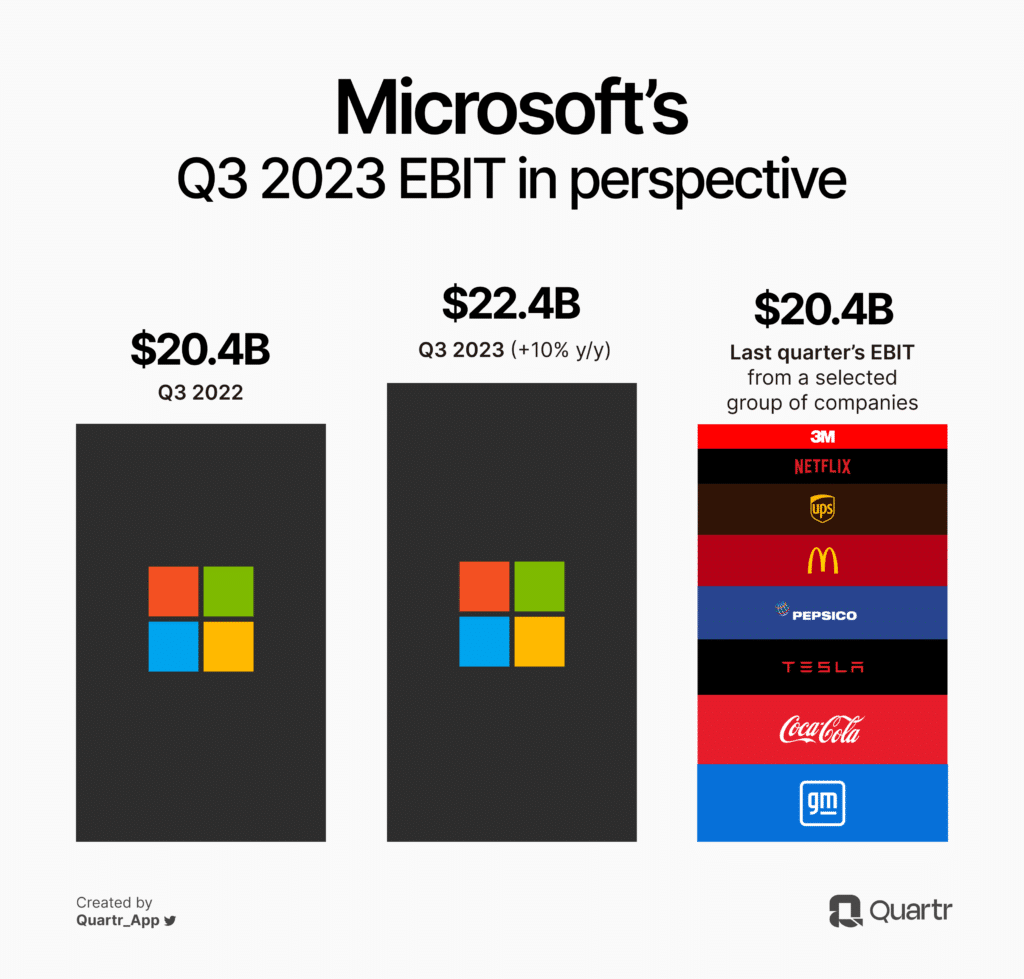
Breakeven Inflation Rates Matter
Last Friday, Lance Roberts published an article entitled Breakeven Inflation Rates Falling isn’t Bullish. It shows the strong correlation between breakeven inflation rates, oil prices, energy stocks, GDP, and corporate profit margins and earnings.
The breakeven inflation rate is the yield of a nominal bond less the yield on an inflation-protected bond (TIP). It essentially provides the market forecast for inflation over a given period. Given the vital link between inflation and interest rates and economic activity, it makes sense that inflation expectations can provide a good economic outlook. Lance writes:
Naturally, as economic demand and inflation decline, so do the prices companies charge consumers. Unsurprisingly, there is a high correlation between breakeven inflation rates and corporate profit margins.
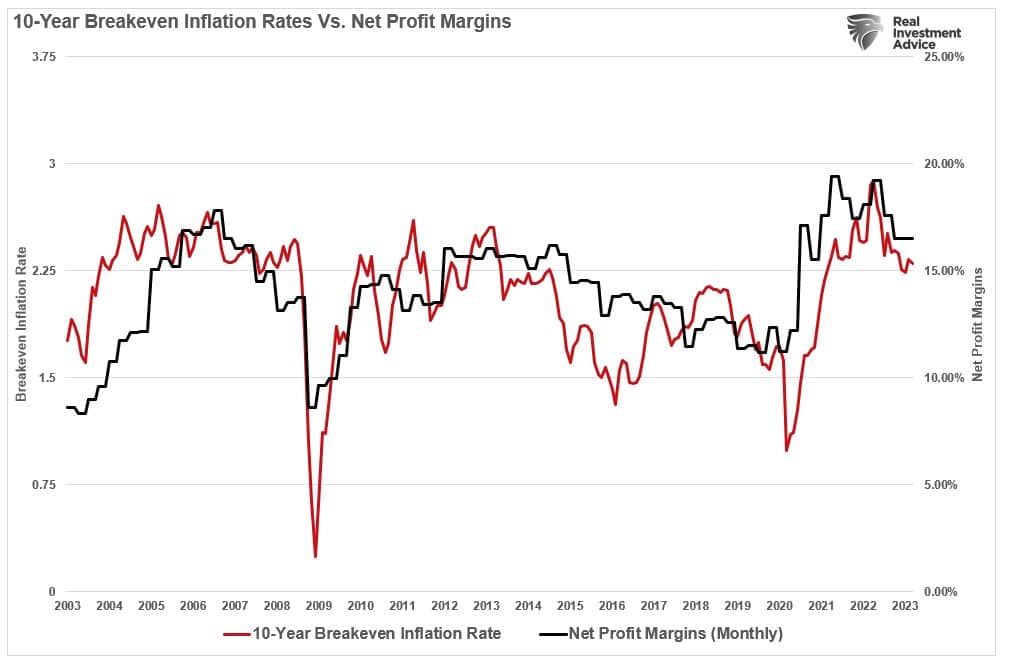
Lance adds:
Given that the surge in earnings and corporate profits resulted from massive fiscal interventions, investors should be asking what the next growth driver will be. If the sharp decline in M2, and falling breakeven rates, tell us anything, it is likely that without further monetary accommodation, earnings growth, and ultimately profitability, may be challenging.
More on UPS
We do not currently hold UPS or its competitors. Still, we follow the freight and shipping sector closely as their comments and results provide near real-time data on wholesale and retail trade, which tend to correlate strongly with broader economic activity. To that end, Peter Bookvar noticed a very telling statement in the UPS press conference, as shown below. The “significant” slowdown in March is not just a UPS phenomenon.
The Atlanta Fed’s GDPNow running GDP computation shows GDP growth for the quarter fell from an expected 3.5% to 2.5% due primarily to March data. Based on the math, January and February, in the aggregate, saw 3.5% economic growth. Consequently, by deduction, growth in March is running at a paltry 0.5%.

Tweet of the Day
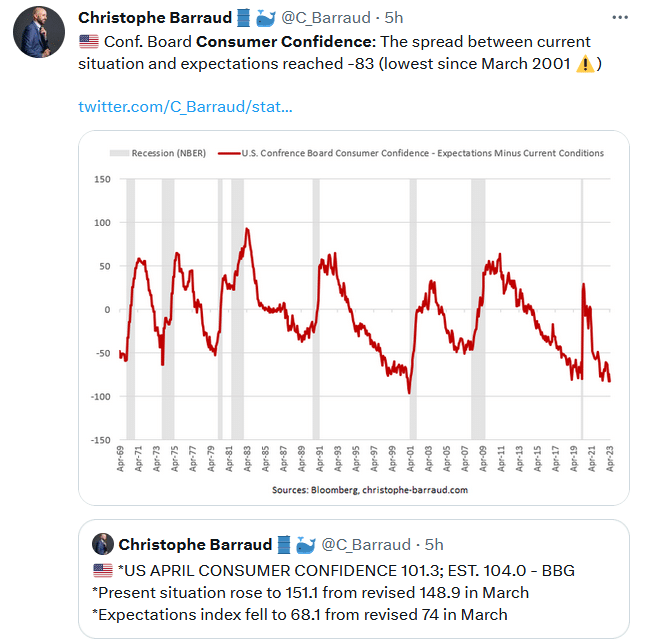
Please subscribe to the daily commentary to receive these updates every morning before the opening bell.
If you found this blog useful, please send it to someone else, share it on social media, or contact us to set up a meeting.


